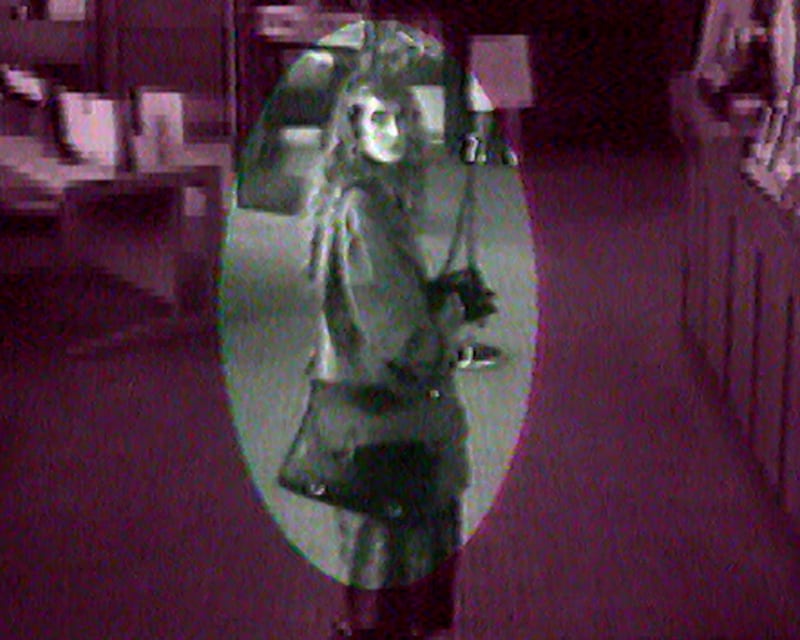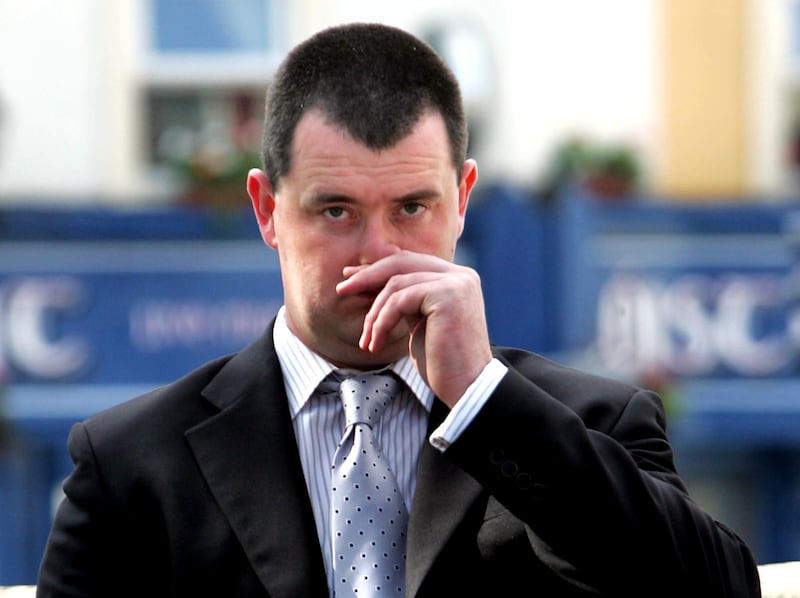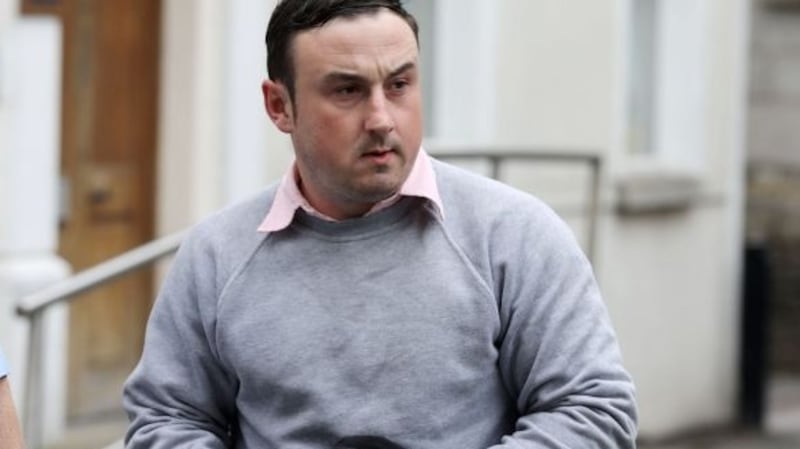Murder detective Pat Marry is a rare breed. He once almost died through stress and overwork, so determined was he to catch a killer.
The retired detective says when he questioned Joe O’Reilly – who murdered his wife, Rachel – he caught him out in lies within minutes, adding O’Reilly instantly knew he had the measure of him.
The detection rate for homicides in the Republic has run around 80 per cent in recent years. That is higher than any other crime type apart from “possession of drugs for personal use”.
In recent months the 1993 disappearance and murder of Annie McCarrick has dominated the headlines. It emerged in The Irish Times that the inquiry was now centring on her life in south Dublin, with two suspects under focus. This was despite an assumption, which endured for nearly three decades, that McCarrick went to Enniskerry, Co Wicklow – and Johnnie Fox’s pub, 6km away in Glencullen – on the day she was last seen alive and vanished there.
READ MORE
[ Will new leads help solve the mystery of Annie McCarrick’s disappearance?Opens in new window ]
When Marry looks at that case he feels “there’s no way she ever went to Johnnie Fox’s”. He says whoever killed the 26-year-old American woman almost certainly cropped up in the initial Garda investigation but was wrongly discounted. He explains the only way to avoid that is to talk to all of the people around the victim and crime and “drill down” – check and double check – every fact they utter in their statements, even innocuous things unrelated to the crime.
If you don’t fully analyse what you have – and I always, always took my time with this – then you’ll fall between two stools or you’ll set the investigation down the wrong track
— Pat Marry
When it comes to murder investigations in general, the list of people to be interviewed is long: current and former partners, parents, siblings, close friends, colleagues, neighbours and the person who discovered the body or raised the alarm, among many others. Somewhere in that maze of people there will usually be information that helps unlock the case. There may be news of a secret concern shared by the victim before they died; one that points gardaí in the direction of the motive for the murder and the person who carried it out. There may also be untruths, even small ones, that when picked at reveal a darker picture.
“These cases can become extremely complex. They’re fluid, they keep moving and you have to be in control of that,” says Marry, a former detective inspector. “As the information is coming into the incident room you have to ask yourself ‘Is it accurate, valid?’” Information, he says, can “come to you in any form – a murder weapon, a witness statement, CCTV footage, telephone records”.

“If you don’t fully analyse what you have – and I always, always took my time with this – then you’ll fall between two stools or you’ll set the investigation down the wrong track.”
He says all people of interest – who may later become suspects – are put through a TIE process: “Trace, interview, eliminate.” Gradually, people of interest are discounted or become firm suspects as more interviews and follow-up checks are done and further information emerges. He adds that when some killers are initially approached for interview by the Garda – even men who have committed a domestic murder but have never committed a serious crime previously – they are convincing liars.
I could tell he was lying. And I could see by the look on his face ... he realised I knew well he was lying, and that I’d prove it
— Pat Marry on asking Joe O'Reilly about his extramarital affair
“These people have psychopathic tendencies. And one of the traits of that personality is that they lie. And they can lie ... They are good at it. But if the guard is good enough they’ll catch them out.”
Marry says “one thing I’ve learned dealing with these killers” is that they often make unusual remarks to the people around them, trying to “justify” their actions. For example, Joe O’Reilly – who murdered his wife, Rachel, at their home in Naul, Co Dublin, in 2004 – told his wife’s friend he had killed her “but that he was doing it in a dream”. Marry got O’Reilly to admit to having an affair, but he lied, saying that extramarital relationship was over.
“I could tell he was lying,” says Marry. “And I could see by the look on his face ... he realised I knew well he was lying, and that I’d prove it.”

Marry says working on murder investigations is “full commitment, with no half measures”.
He once booked himself into a B&B across the road from Dundalk Garda station while working on the investigation into the 2013 gun murder of Det Adrian Donohoe in Bellurgan, Co Louth. Rising at 4.30am daily, he briefed teams of gardaí going out on early morning searches hoping to catch their targets unawares.
With many work days starting at 4.30am and ending close to midnight, his health eventually suffered, as stress took its toll. He collapsed at one point, his heart stopping before he was revived and underwent surgery. He recovered, returned to policing and resumed the Donohoe inquiry. He secured a murder charge against south Armagh robbery gang member Aaron Brady and submitted his retirement papers on the same day.
“I have a photograph of myself, the charge sheet in one hand and my retirement papers in the other,” he says.

Marry left the force as he had become disillusioned with aspects of Garda management and nepotism. But he was determined to charge Brady, who was subsequently convicted of capital murder, before he retired.
It is important to “empower” gardaí working on a murder investigation, says Marry, “by giving them jobs that [are] important and explaining why they [are] important”.
“At the back of all of this, you always have to remember the families of the victims. They have to be what you are thinking of as you work through everything. Always,” he says.
Going out and talking to people like that is an old-fashioned system. But it works
— Retired garda Michael O’Sullivan
Michael O’Sullivan is another retired Garda member with a storied career. While he was an assistant commissioner by the time he retired, he worked for years as a detective with the National Bureau of Criminal Investigation, which assists local detectives nationwide in all murder inquiries.
O’Sullivan says sometimes theories and suspects abound at the start. However, rather than “competing voices” within the investigation team being a problem, “different people in the room would give their opinions” about where the investigation should be focused. Detectives are tasked – given “jobs” – to interview witnesses or possible suspects, testing all of the theories put forward.
[ Two suspects examined as Annie McCarrick investigation boosted with new resourcesOpens in new window ]
“There could be something like 300 jobs,” he says. “And I’ll tell you this; going out and talking to people like that is an old-fashioned system. But it works.”
He adds that it is crucial to “get the small bits right”. This includes, for example, interviewing staff at a newsagents and checking their CCTV to corroborate the movements of a person of interest in the case, even if it is the very early stages and the person is not yet a possible suspect.
“You don’t presuppose anything. If someone tells you ‘Yes, my colleague was here at five o’clock, he’s here every day at five,’ you don’t just accept that. You want to see him there at five and you also want the CCTV, maybe of him getting on the Dart and so on.”
A garda could be told they had a half-assed statement and if they came back with another one like that, they were not the type of person who should be on this [murder investigation] team. There could be 30 or 40 people in the room at the time
O’Sullivan adds that when witness statements have been reviewed, the garda who has taken a statement is sent back to the same witness or suspect again to ask follow-up questions if their colleagues deem it necessary. That process can sometimes get uncomfortable as it is not unusual for a garda to be asked about a statement they have taken, and for holes picked to be in it, in front of dozens of colleagues at a case conference.
“They could be told they had a half-assed statement and if they came back with another one like that, they were not the type of person who should be on this [murder investigation] team. There could be 30 or 40 people in the room at the time. People on teams have to be really competent, absolutely thorough. You don’t grab up the first 20 [gardaí] you can for a murder investigation.”
O’Sullivan adds there is intense competition among gardaí who are “driven and who like to be challenged” for places on murder investigation teams. “You either have what it takes or you don’t, and there’s lots of competition for these roles,” he says.
However, it is possible for even very experienced and conscientious investigators to be led astray, at least temporarily.
“You can get misinformation and you can have over-zealous witnesses who can throw you, with no malice intended. Some people want attention. So you have to drill down in every detail they’ve told you and you take nothing – nothing – for granted. You believe nothing. You can’t let the bottle fit the cork: you drill down into everything. You have to go down every avenue with a view to ‘this could be it, it could be this guy,’” he says.
“It’s rare to go down a rabbit hole and keep going down it. Could that happen? Yes. But these investigations go on for months, maybe years. So you explore all avenues, you keep drilling down until anything that’s any way shaky falls apart.”
O’Sullivan says murder investigations can be “very long, tedious, very labour-intensive; everything recorded and documented.”
“It’s not all about going and kicking in the door and arresting the guy who did it. So it’s time consuming and expensive. At the same time, it’s a small country,” he says.
“And once you start digging, it’s very, very rare that you won’t get some whisper about this killing. It takes hard work, but it’ll come.”


















